Today I’ll cover the basic rules for putting holes into I-joists. I discussed notching and boring for dimensional lumber in last week’s blog post, and it was easy to cover because the rules are the same for everything. When it comes to I-joists, the rule in the codebook is even simpler: follow the manufacturer’s instructions. You can find the exact language under section R502.8.2 of the International Residential Code. But now it gets a little more complicated.
Manufacturers rules for holes in I-Joists
The exact rules for putting holes in I-joists will vary from manufacturer to manufacturer. If you want to know the exact rules for any given joist, you need to know the make, model, and size of the I-joist. Once you have these three pieces of information, fire up your Google machine and look up the manufacturer’s specs. Just for fun, here are five different sets of rules from five different manufacturers:
Not surprisingly, they’re all pretty similar. I’ll discuss the stuff they all have in common.
Don’t mess with flanges. The flanges are the top and bottom parts of every I-joist, and you can’t touch ’em. No cuts, notches, holes, or dirty looks. They’re sensitive, ok?
Big holes in the middle are fine. Compared to the rules for boring holes in dimensional lumber, you can put surprisingly large holes in the middle web of I-joists. In fact, you can put holes that go almost all the way from the bottom to the top of the joist. TJI, for example, say you just need to leave 1/8″ of webbing remaining! For people used to looking at dimensional lumber, these holes look very, very wrong… but they’re actually fine.
Stay away from supports. While it’s ok to make big holes in I-joists, you need to stay away from bearing points. These exact rules vary quite a bit from manufacturer to manufacturer, but in general, manufacturers are fussy about holes too close to areas with support beams below.
Only small holes in cantilevers. Manufacturers will allow holes in cantilevered sections, but only up to 1-1/2″ in diameter.
Lots of small holes equal one big hole. Holes need to be spaced certain distances from each other, but if you want to put a bunch of holes in one spot, you can count them all as one big hole.
Big holes belong in the middle of the span. If you have to put a big hole in an I-joist, the best place is in the middle of the joist span. The closer you get to the edge of a joist, the smaller the hole you’re allowed to place there.
Summary
The rules for putting holes in I-joists come from the manufacturers. To know exactly what’s allowed, you need to do some research, but in general, the rules are all pretty similar. The two biggest things to remember are that big holes are allowed in the middle, and don’t mess with the flanges.

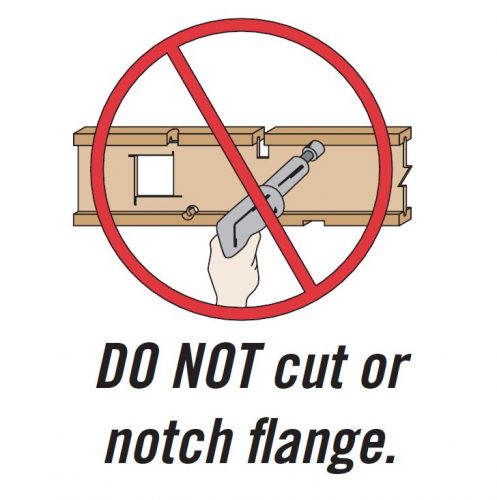
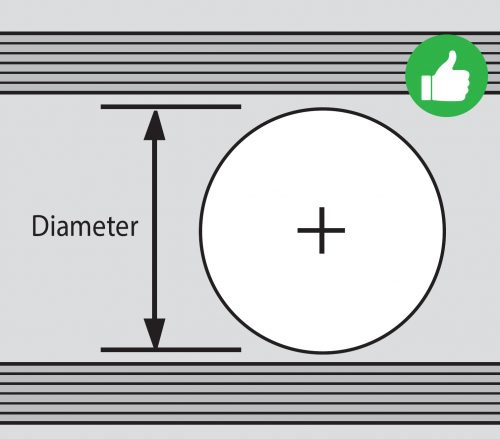
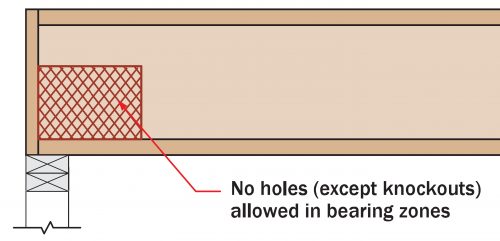
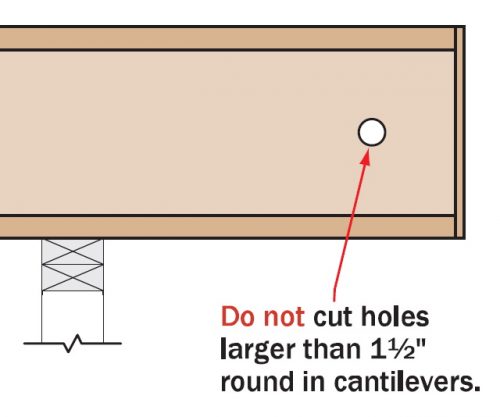
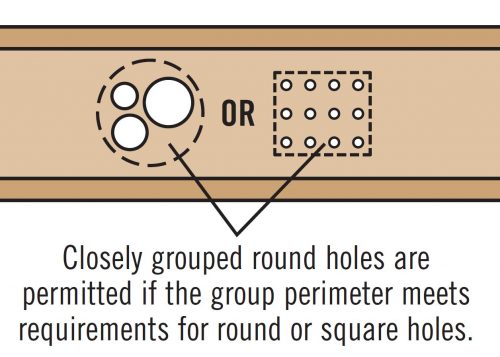
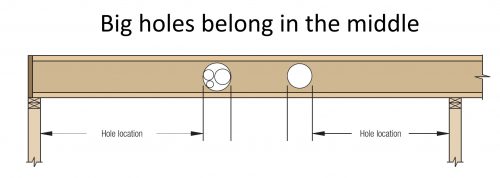
Laura Keogan
September 28, 2021, 6:23 am
I found this article very helpful! Most of my real estate career has been focused on older home areas. I have recently become involved in new construction, and to see large holes through these I-joists threw me for a loop. Great article.
metal roofing greeley co
September 29, 2021, 2:38 am
Absolutely! NEVER drill a hole within 1′ of the end of any beam or a floor joist. You should also avoid drilling within 1′ of where a beam sits on top of a support column or post